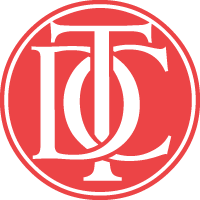Typography, Referenced
Haley, Allan; Poulin, Richard; Saltz, Ina
Review by Alex W. White
Comprehensive. That’s the very first word that comes to mind with this remarkable 400-page compilation of information. But that happens to be the first word on the back of the book, chosen by the editors and publicity mavens at the publisher, Rockport. So perhaps it’s suspect. At least, I rarely trust the blurb copy written by marketing people.
Instead, let’s try inclusive, thorough, sweeping, or wall-to-wall. Each is an accurate descriptor of this valuable and necessary volume.
Typography, Referenced was prepared by a small group of highly-qualified authors. The lead is Ina Saltz, who worked with Allan Haley, Kathryn Henderson, Gerry Leonidas, Richard Poulin, Jason Tselentis, Tony Seddon, and Tyler Alterman. Some of these contributors are world-known, some are up-and-comers showing terrific promise. To a person, they present their sections with clarity and authority.
The book is presented in ten sections, each a thorough and relentless attack on typographic ignorance: “Type History and Timeline,” “Type Classification and Identification,” “Type Design and Development,” “Type Designers,” “Type Foundries,” “Typefaces and Specimens,” “Typographic Principles,” “Contemporary Usage: Designing with Type,” “Typographic Terminology and Language,” and “Type Management.” The eleventh section is a delicious list of “Type-Specific Resources,” like schools, publications, organizations, films, collections, online resources, and illustrated bibliography. (Full disclosure: two of my books are listed in that section.)
Good points:
- Nothing typographic has been overlooked.
- Beautiful full color throughout.
- The design of the book is understated and stays out of the way of the tasty content.
- Concise seven-page Glossary that covers the essentials for the prospective reader of this book but doesn’t get lost in the weeds of type minutiae – that I admit some readers might miss.
- Yummy section on “Contemporary Usage” shows eighty pages of imaginative type used in peters, books, magazines, collateral, identity, advertising, packaging, signage, and interactive. You can’t get excited looking at this? You better reach for a TDC Annual, the only place better stocked with tasty type bits.
- Makes a killer textbook: a seriously-full semester’s read. It also makes an outstanding reference work for pro’s inspiration.
On the other hand:
- The most-welcome section on Type Designers profiles 69 individuals, and not one of them is shown. The point of describing who they are would have been immeasurably advanced if photos of them had been included. Give them their humanity!
- In the same section, 21 type designers’ work is represented not with samples of their types in use, but with 8p6 squares of letterform abstractions that don’t revel the types adequately. Or, really, at all. Pity no one could secure samples of all 69 designers’ works. The 48 designers who do rate proper descriptive imagery look like first class citizens among the firmament.
- The illustrations for the more mundane aspects of type, like Parts of Letterforms, and Type Classification (and to a lesser extent two other sections), do not look as sexy and interesting as the inherently pretty sections of this book. They make the nuts and bolts of type look like a chore. “Creativity” looks more fun, but the functionality of type – its real usefulness – looks second rate and unfunny. That’s an unfortunate message for typographic newbies who most need that material.
This is a superb addition to the canon. I recommend it with enthusiasm.

